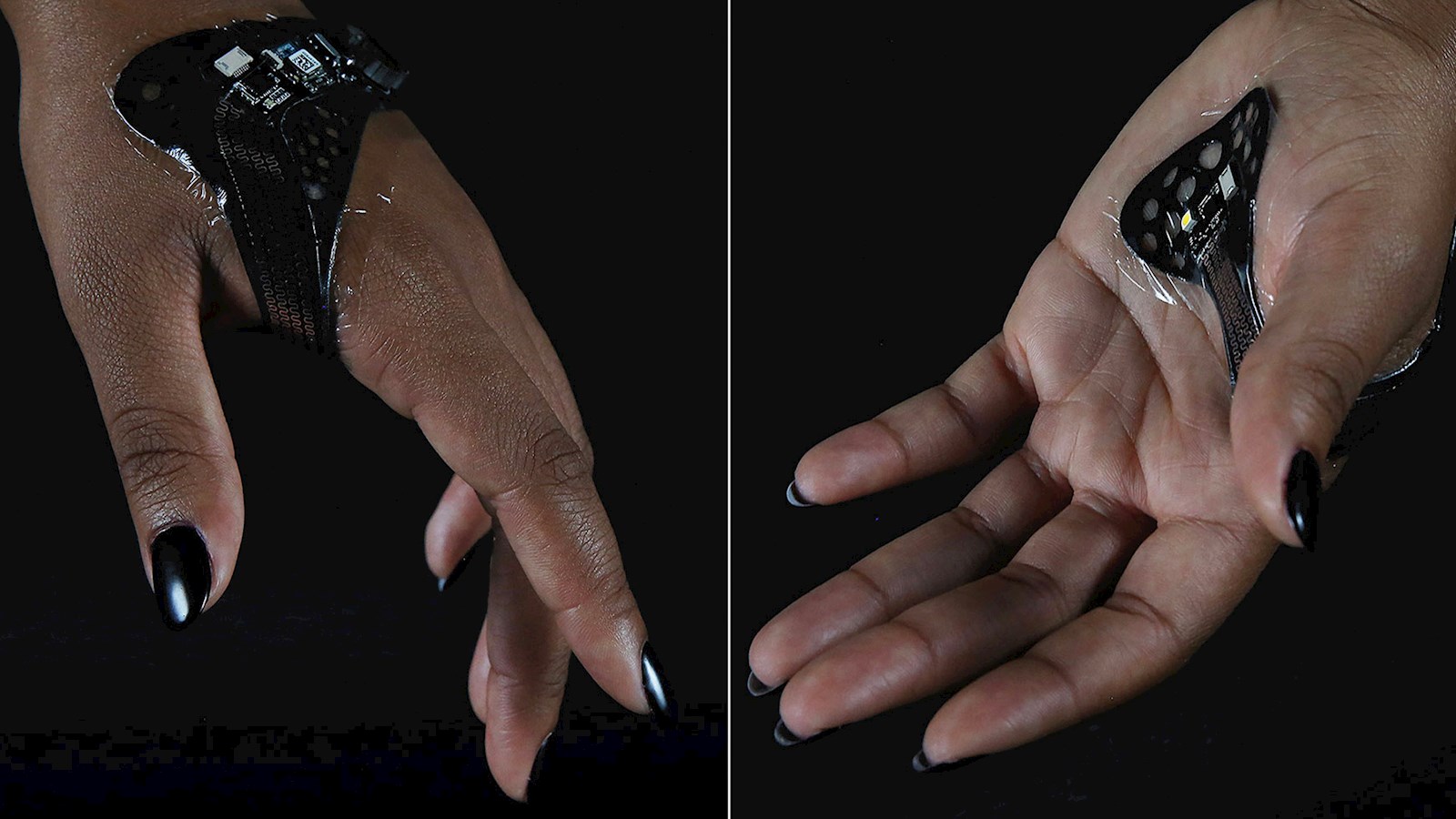
Tactile tech
In the future, what will technology feel like?
By 2020, there will be an average of nearly seven connected devices per person around the globe, according to Statista. Technology is embedded into almost every part of our daily lives, from waking us up in the morning to turning out the lights at night. Much of its presence is intangible, but that could be about to change. We’ve already seen the advent of technology that looks and sounds more human – now, researchers are looking to our epidermis to make technology feel more human.
In October 2019, researchers behind Skin-On Interfaces revealed a phone case which mimics the haptics of human skin. The ‘skin’ is able to sense multiple gestures such as strokes, stretches and various pressures and translate them into functions on the phone. For example, twisting the skin surface adjusts the phone’s volume; tickling the skin prompts it to send a laughing emoji, connecting human and device on an emotional level. The team is also exploring how the artificial skin might be used with other devices – such as smart watches and trackpads.
Humans as well as devices are set to benefit from new ‘skin’ interfaces. In May 2019, researchers at Carnegie Mellon University in the US unveiled ElectroDermis, a wearable electronic bandage which can be used to monitor the body for a variety of medical, fitness and lifestyle purposes. Unlike other wearable tech, the ElectroDermis bandage is flexible and elastic, meaning it can be secured to parts of the body easily and unobtrusively.
In September 2019, researchers at the Swiss Federal Institute of Technology Lausanne revealed a wearable skin that allows virtual reality (VR) users to feel objects in virtual environments. The skin, made from silicone and electrodes, is filled with sensors and actuators which work together to realistically mimic a sense of touch. So far, the prototype is limited to a fingertip device; however, researchers are hopeful of more applications in the future.
Projects like these provide a unique insight into the future of tactile technology. Will we be prepared to interact with technology that feels more human? Or will this venture into Uncanny Valley territory, that eerie space where not-quite-human entities make us uneasy? Brands will need to take care when navigating this new world where the boundaries between human and technological touch are blurred.
published on
06 December 2019
Category
More in Technology & data

How to build your brand in-game
A new research report from WPP and SuperAwesome

WPP puts itself at the heart of collaborative 3D worlds
Pixar's 3D animation file format – USD – is the invisible building block of our digital 3D future.

A clarion call for AI, accessibility & advertising
Innovating at the intersection of AI, accessibility, and advertising

